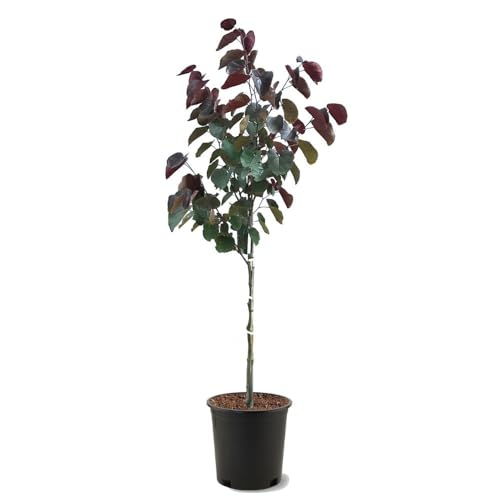How to grow eastern redbuds – the cherished native tree with striking spring blooms
Adaptable and reliable, eastern redbuds are tough trees that will not disappoint


The blossom of the eastern redbud tree is a herald of spring. From March, pink and purple pea-like blooms open on stems, branches and trunks, illuminating the entire tree in vibrant hues. While the garden is still sleeping, the flowers of the eastern redbud serve as a reminder of warmer days to come.
The native eastern redbud tree, Cercis canadensis, is found growing in eastern woodlands, from New Jersey through to West Virginia, Georgia down to northern Florida and across the Mississippi plains. For this reason, it is often considered one of the best shade-tolerant trees, able to grow in darker corners while still producing a profusion of flowers every year.
In their native habitat, the eastern redbud can grow up to 30 feet tall and 30 feet wide, yet when they are grown as specimen trees in backyards, the size and scale can be managed. So, if you are looking for some of the best trees for small gardens, we have all the information you need on how to grow eastern redbuds.
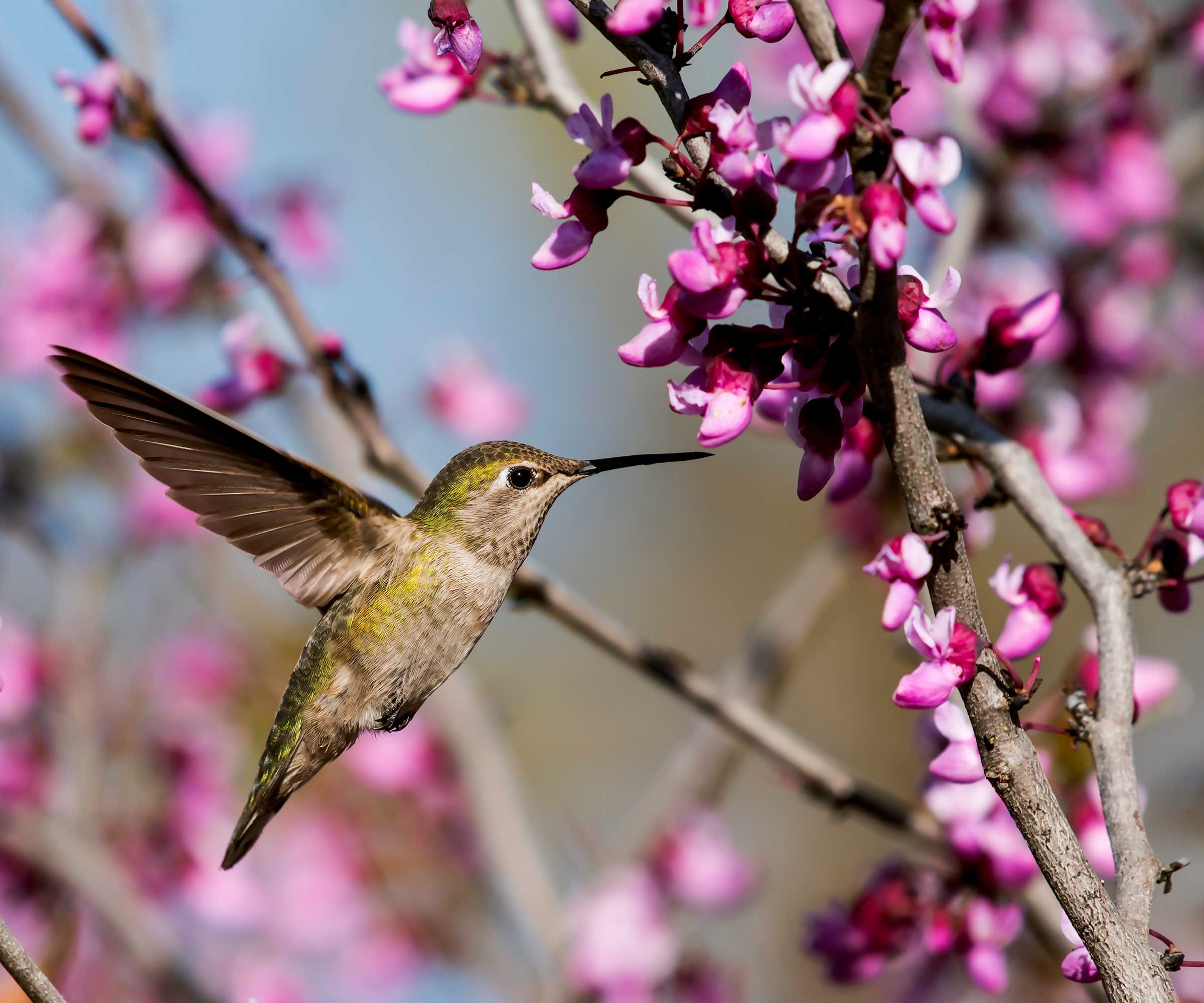
How to grow eastern redbuds
The eastern redbud tree is part of the pea or legume plant family, Fabaceae, which is why the blooms will appear similar to other flowers in this group, like sweet peas. Found growing across much of the eastern and central United States, this native tree is cherished by many and is recognized as the state tree of Oklahoma.
Things to consider about eastern redbud trees
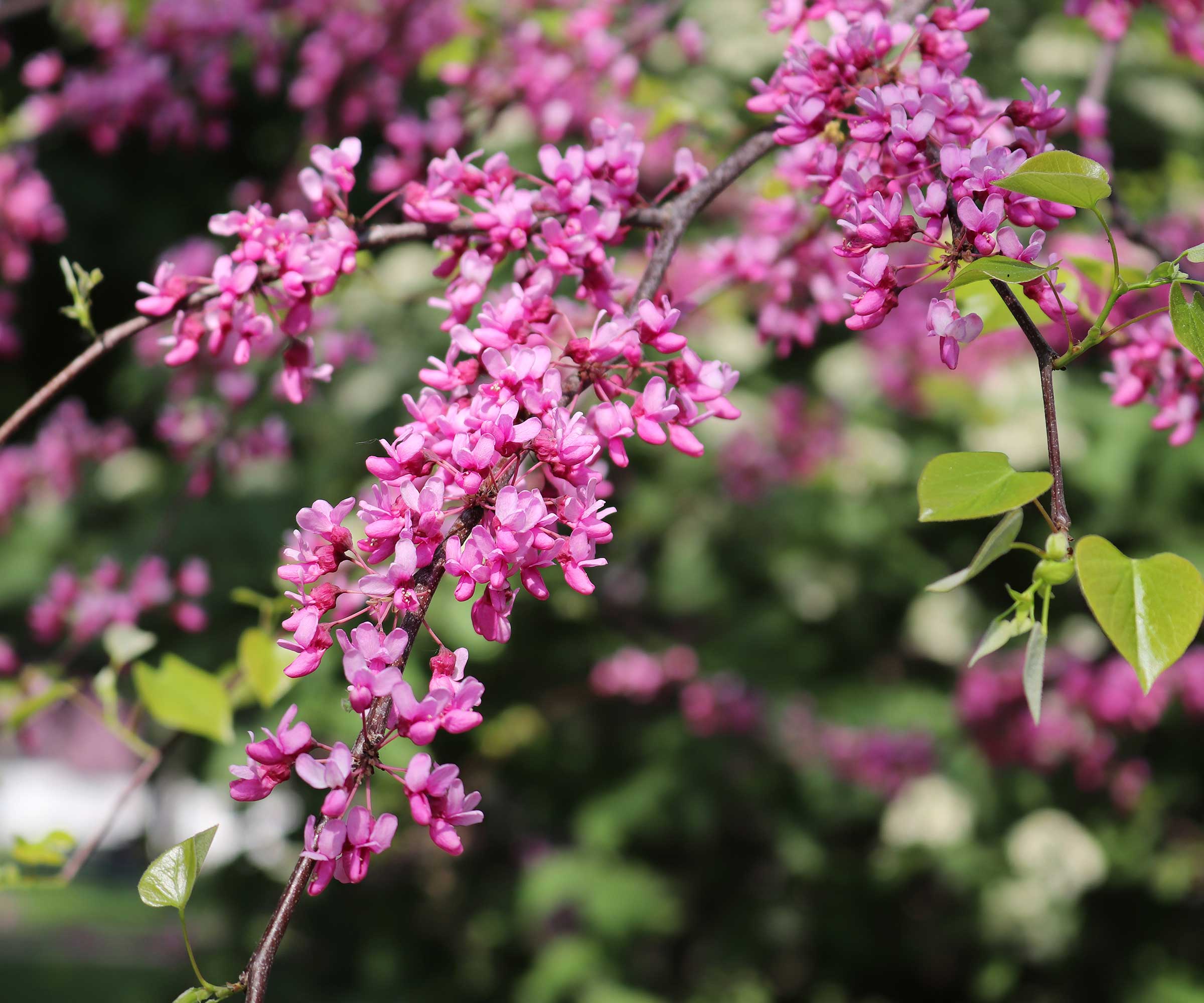
'Eastern redbud trees are one of our best North American native trees,' says Sam Niemann, garden expert and founder of Grown by Design, a boutique landscape design firm based in San Diego. 'While these trees tend to struggle with extended dry and hot periods, they are fairly resilient.
'Growing best in part sun with well-draining but moist soils, eastern redbuds typically thrive in damp and cool northern zones, but can equally grow well in warmer climates including here in California.'
Eastern redbuds tend to grow best in US hardiness zones 4 to 9, although this will vary depending on the specific variety you own. Most are fully winter hardy, able to tolerate cold and frosty winters, and moderately warm and sunny summers.
Design expertise in your inbox – from inspiring decorating ideas and beautiful celebrity homes to practical gardening advice and shopping round-ups.
For an unusual shrub with dark foliage, try growing Cercis canadensis 'Forest Pansy', available from Walmart. 'The dark-foliage is so unusual,' says Kathy Jentz, plant expert and editor of the Washington Gardener Magazine. 'I have grown this plum-leaved variety for many years and still love seeing it in the yard.'
Kathy recommends planting groundcover underneath redbuds, which will 'act as a living, green mulch, protecting the redbud roots in summer and retaining moisture in the soil.'

Sam is a lifelong gardener whose passion for plants and nature has been the driving force behind his extensive knowledge and expertise in horticulture. He studied at San Diego State University, earning a degree in Finance while simultaneously founding Grown by Design, a boutique landscape design firm.
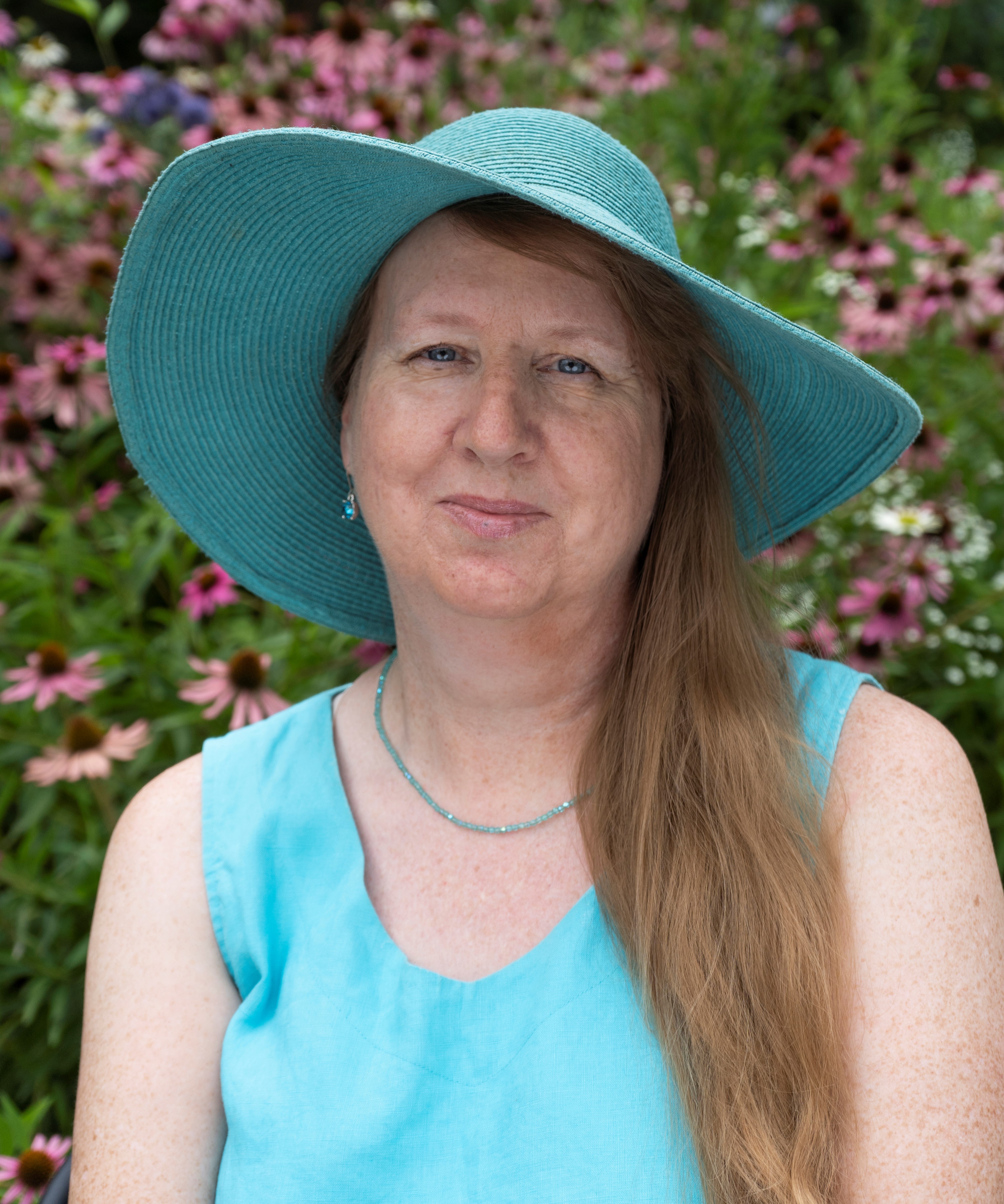
Kathy Jentz is editor and publisher of the award-winning Washington Gardener Magazine, based in Washington, DC. She is also the editor of three plant society journals: the Water Garden Journal, The Azalean, and Fanfare (Daylily Society Region 3).
Growing advice for eastern redbud trees
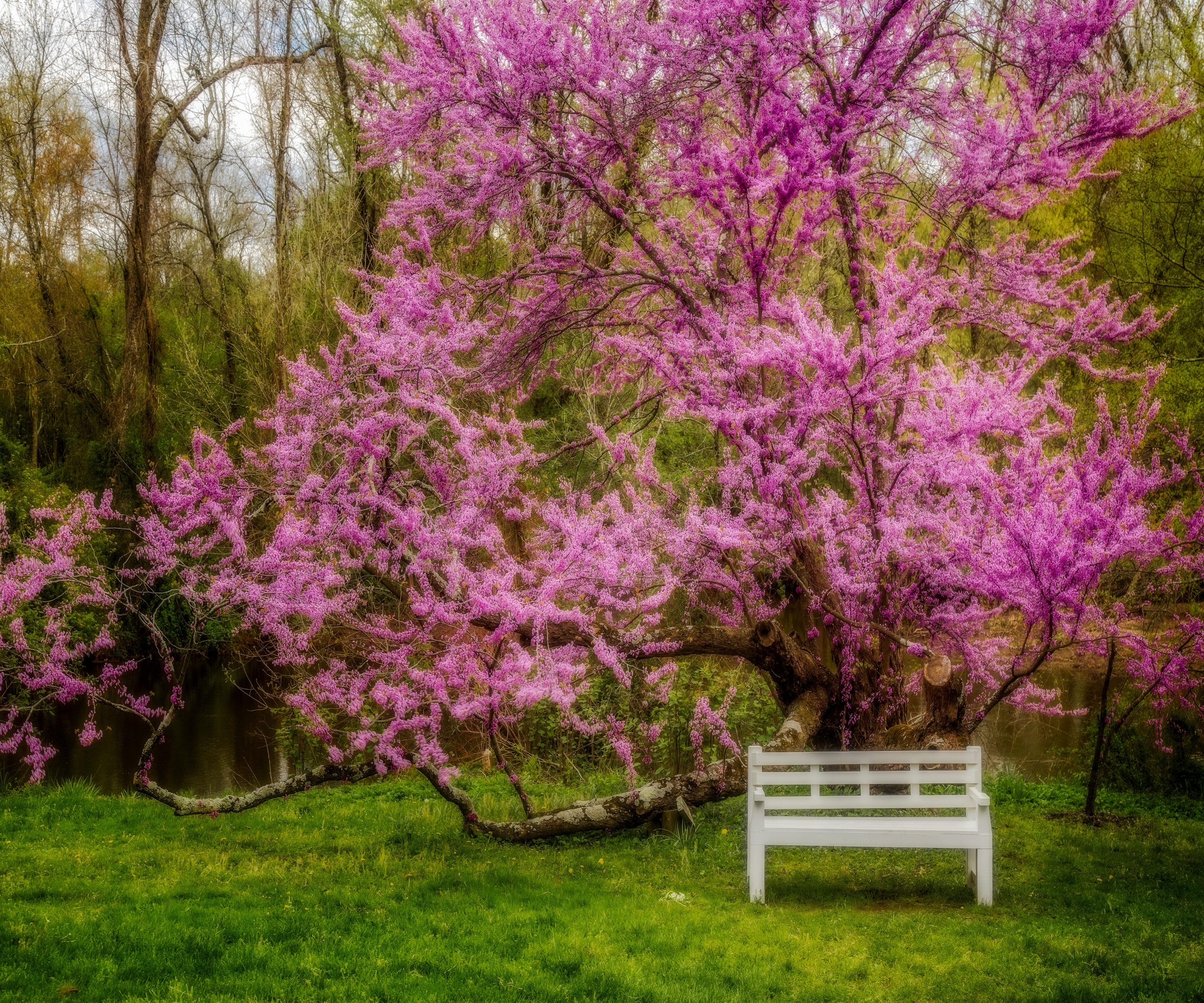
- Soil: Eastern redbuds will tolerate most soil conditions, adapting to slightly acidic or alkaline soils. Your tree will not do well in poorly drained or waterlogged soils and will appreciate consistent moisture. To improve soil health, consider applying mulch every fall or winter.
- Light: For the best results, grow eastern redbuds in part-sun-part-shade. While they will tolerate full sun, in southerly regions and warmer zones it is best to give your tree some protection during the afternoon.
- Watering: Consistent watering is important for your eastern redbud tree, especially during the first year after planting. Monitor the soil during the spring and summer and prevent the roots from drying out. Your redbud tree will gradually become drought-tolerant as it matures.
- Fertilizing: 'I recommend fertilizing redbud trees once or twice a year,' says Sam Niemann. Any more than that is probably unnecessary, and overfeeding is a common fertilizing mistake to avoid. 'Fertilize in the spring as the trees start to grow, and if needed, again in late summer or early fall. I prefer using a fertilizer formulated for trees.' Tree feed spikes are available from Walmart.
- Pruning: 'Redbud trees do not require much pruning,' Sam adds. 'Prune as needed to maintain the health and shape of the tree, focusing on removing crossing, diseased, or dead branches. This will depend on your tree variety, as many typically stay small so don’t require frequent pruning.' Try these strong Felco pruners, available from Walmart, for your tree pruning jobs.
FAQs
Can I grow an eastern redbud tree in a pot?
Yes, you can grow this native tree in a pot, which is a good option for those with smaller outside spaces. It is best to use a variety smaller in size and more suited to container growing. For example, Cercis canadensis 'Ace of Hearts' is a dwarf variety that will grow no bigger than 10 feet tall, making this an ideal option for a container garden or a smaller yard. Remember, as with all pots, water regularly throughout the growing season.
Growing the native eastern redbud tree is sure to add impact to your yard, particularly in spring when pink and purple blooms erupt in a blaze of color. What's more, early-to-rise pollinators will be glad of the nectar on offer from this tree. For additional tree ideas and inspiration, see our guide on how to grow a ginkgo tree, or for a native option, how to grow sassafrass.

Thomas is a Content Editor within the Gardens Team at Homes and Gardens. He has worked as a professional gardener for both public spaces and private estates, specializing in productive gardening, growing food and flowers. Trained in Horticulture at the Garden Museum, he has written on gardening and garden history for various publications, including The English Garden, Gardens Illustrated, Hortus, The London Gardener and Bloom. He has co-authored a Lonely Planet travel book, The Tree Atlas, due out in 2024.
